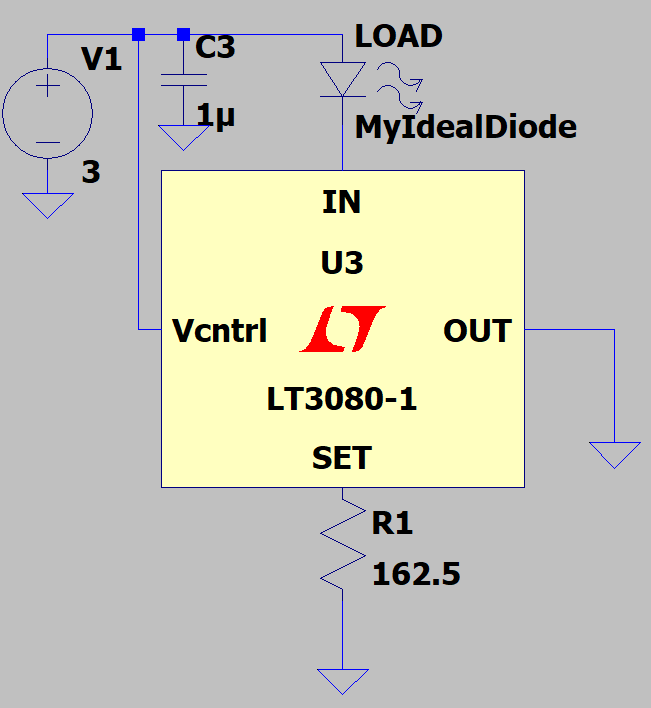I am trying to design a minimalistic current source to drive an LED from a lithium polymer battery and with a small number of components to minimize board space usage.
First I wanted to use the same type of current source shown in the datasheet of the LT3080 :

then I noticed the LT3080-1 is the same but with a 25 mOhms resistor in the output of the functionnal diagram. So my question is : Can I use LT3080-1 as current source with only the integrated 25 mOhms as output resistor?
It seems to work in LTSPICE with the following schematic with a 3.2 voltage source (not with 3 as on the picture) for a 65 mA current source (although there is a slight offset, which is okay for my application and can be accounted for anyway) :

But I am wondering if maybe there are imprecisions which will prevent repeatability of current accuracy in production? The current reference inside the component seems precise enough but I don't know the accuracy of the 25 mOhms resistor.
I want to use this component because of the low voltage drop (~0.3V) and the fact that I am driving an LED from a LIPO battery (4.2V max, 3.2V min) with a Vf= 2.9V. The 25 mOhm resistor also minimizes the voltage drop around the output resistor.
I don't want to use buck boost LED drivers because they are even more expensive and require more components.
